Abstract
A standard stringent strain of Escherichia coli makes little or no ribosomal ribonucleic acid (RNA) during starvation for an essential amino acid, whereas the isogenic relaxed strain makes both ribosomal and messenger RNA. A third class of strains was found which continues to make ribosomal RNA during starvation, but the RNA made is apparently unstable. There is little accumulation of RNA in the third class of strains, and few complete newly formed chains of 3H-ribosomal RNA are observed in sedimentation analyses, even after long labeling times.
Full text
PDF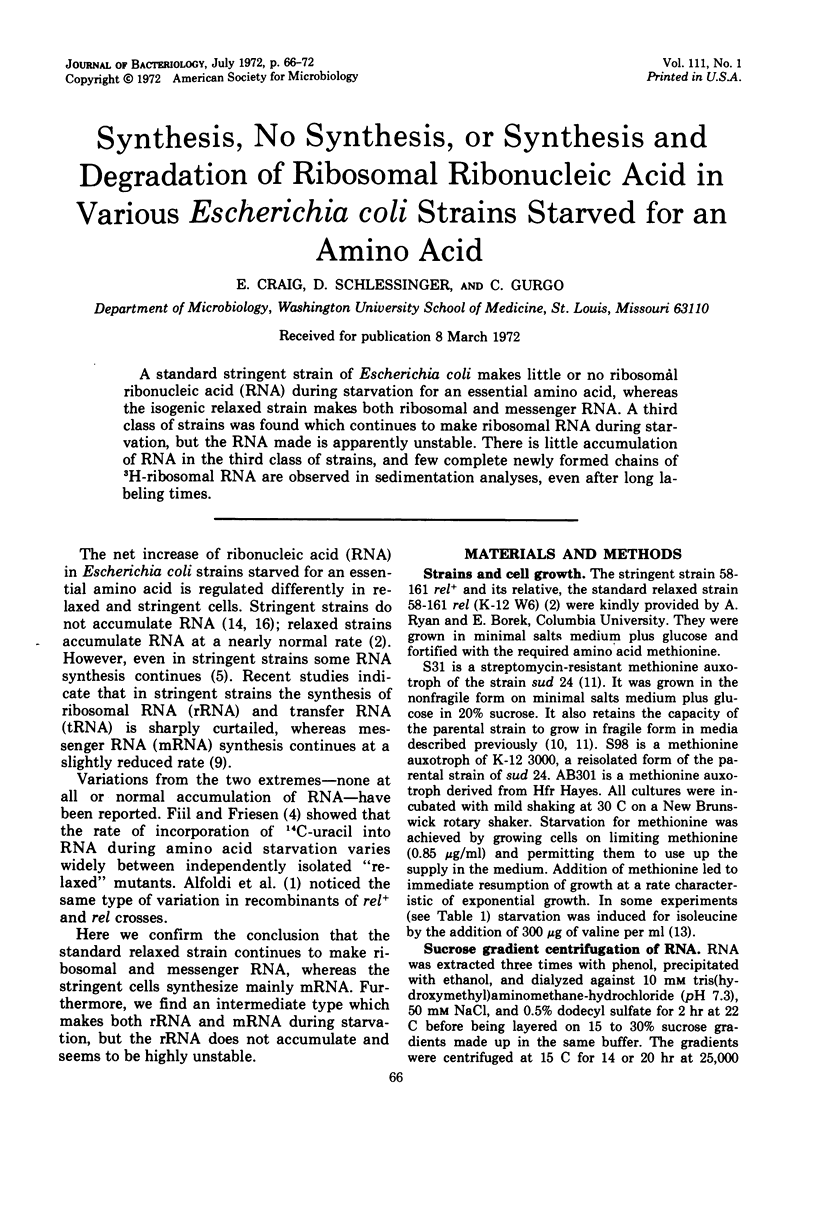
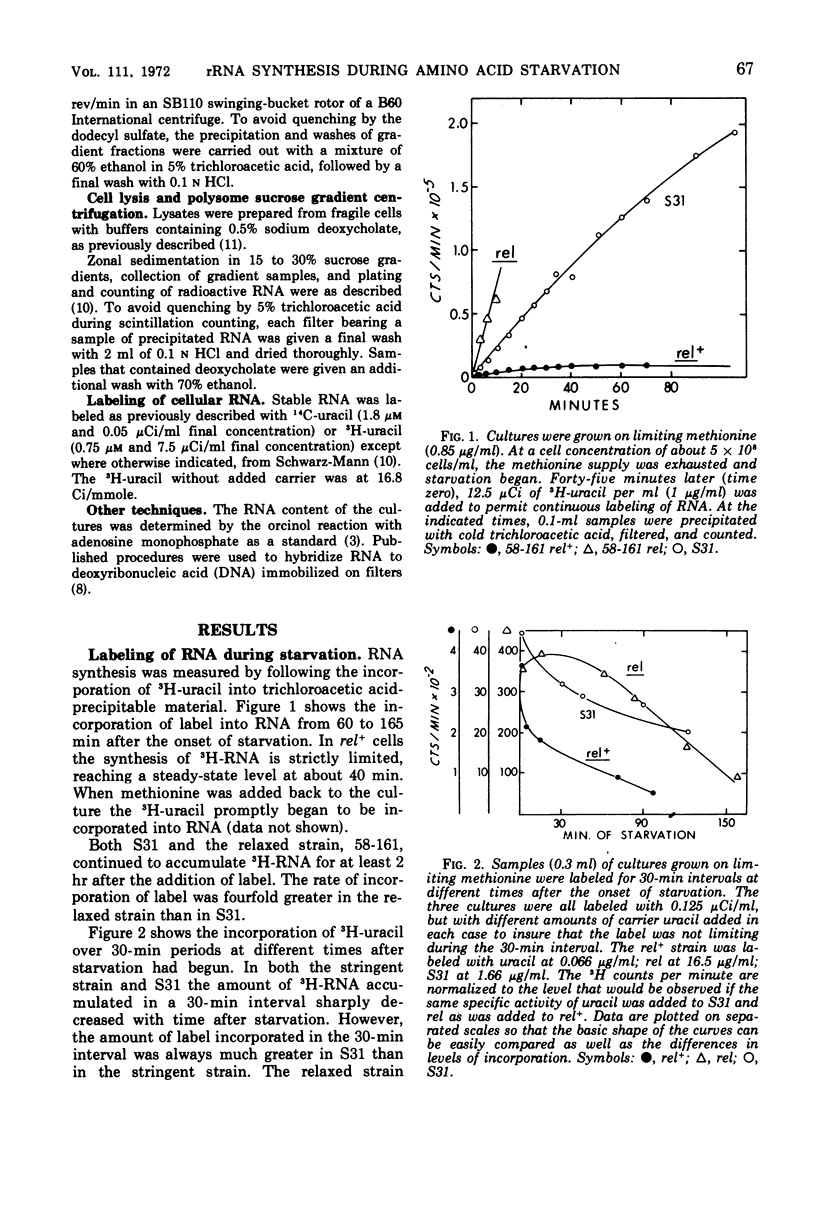
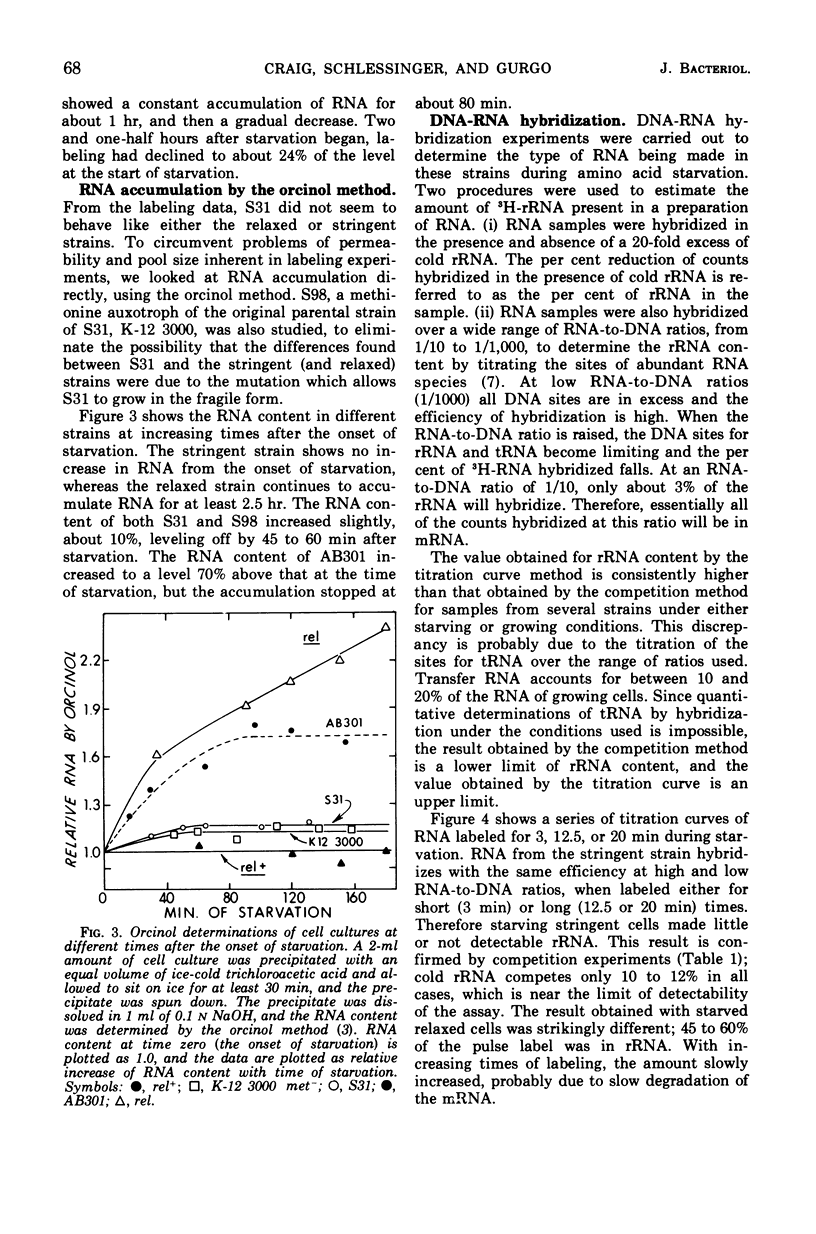
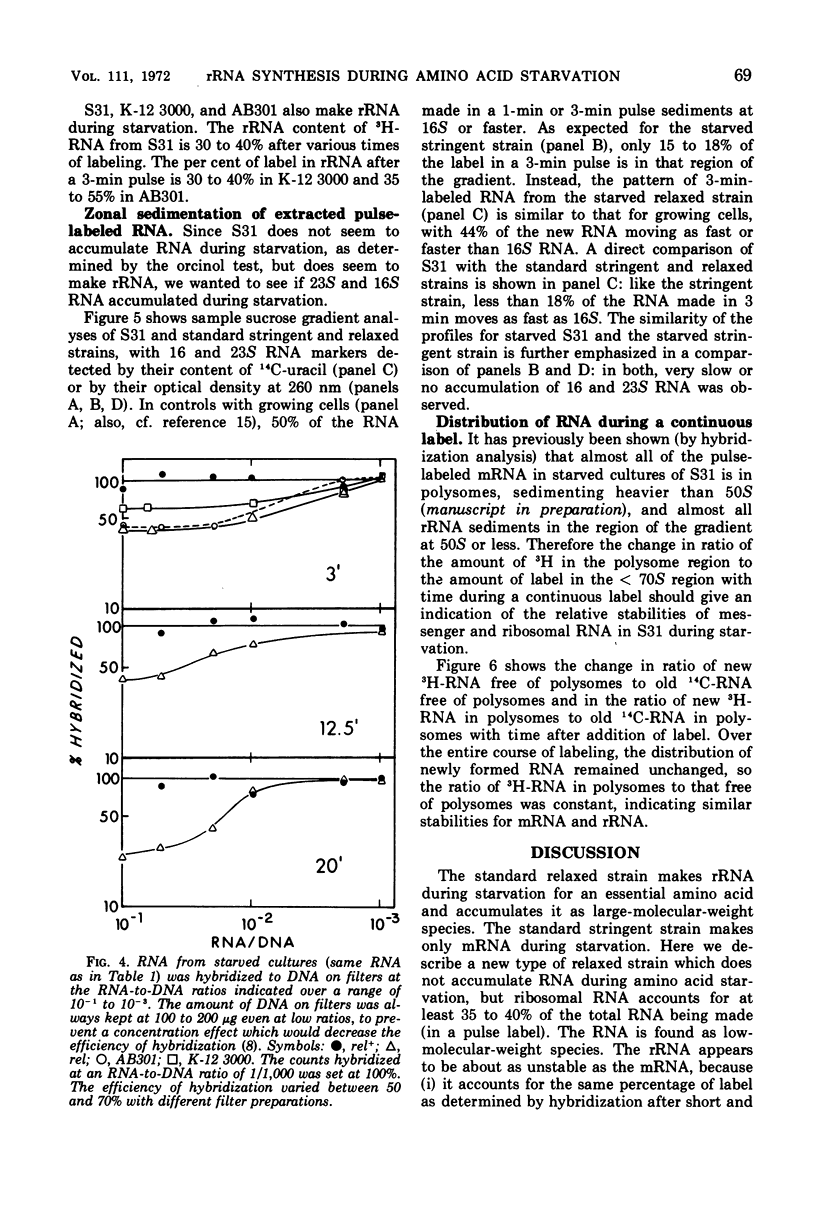
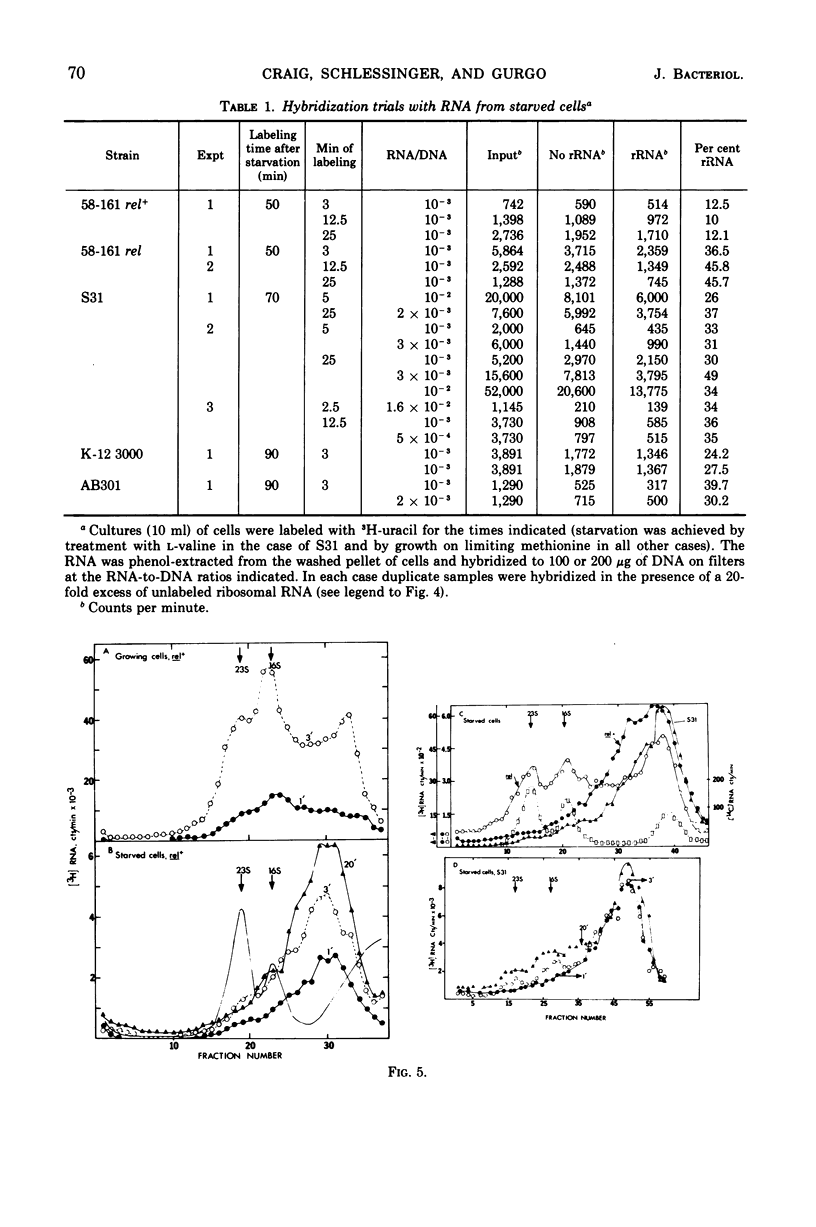
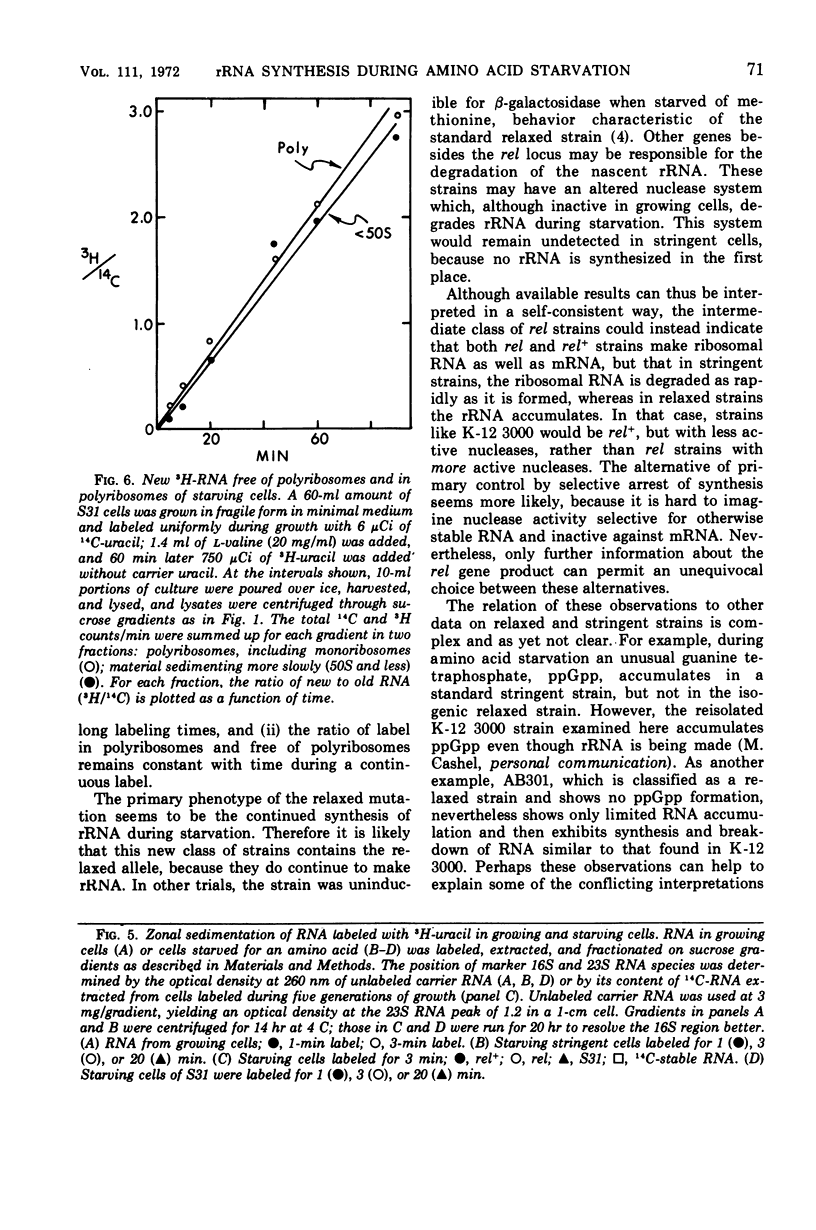

Selected References
These references are in PubMed. This may not be the complete list of references from this article.
- ALFOELDI L., STENT G. S., HOOGS M., HILL R. PHYSIOLOGICAL EFFECTS OF THE RNA CONTROL (RC) GENE IN E. COLI. Z Vererbungsl. 1963 Nov 21;94:285–302. doi: 10.1007/BF00894773. [DOI] [PubMed] [Google Scholar]
- Fiil N., Friesen J. D. Isolation of "relaxed" mutants of Escherichia coli. J Bacteriol. 1968 Feb;95(2):729–731. doi: 10.1128/jb.95.2.729-731.1968. [DOI] [PMC free article] [PubMed] [Google Scholar]
- Friesen J. D. A study of the relationship between polyribosomes and messenger RNA in Escherichia coli. J Mol Biol. 1968 Mar 14;32(2):183–200. doi: 10.1016/0022-2836(68)90003-x. [DOI] [PubMed] [Google Scholar]
- Friesen J. D. Control of messenger RNA synthesis and decay in Escherichia coli. J Mol Biol. 1966 Oct;20(3):559–573. doi: 10.1016/0022-2836(66)90011-8. [DOI] [PubMed] [Google Scholar]
- Kennel D. Titration of the gene sites on DNA by DNA-RNA hybridization. II. The Escherichia coli chromosome. J Mol Biol. 1968 May 28;34(1):85–103. doi: 10.1016/0022-2836(68)90236-2. [DOI] [PubMed] [Google Scholar]
- Kennell D., Kotoulas A. Titration of the gene sites on DNA by DNA-RNA hybridization. I. Problem of measurement. J Mol Biol. 1968 May 28;34(1):71–84. doi: 10.1016/0022-2836(68)90235-0. [DOI] [PubMed] [Google Scholar]
- Lazzarini R. A., Dahlberg A. E. The control of ribonucleic acid synthesis during amino acid deprivation in Escherichia coli. J Biol Chem. 1971 Jan 25;246(2):420–429. [PubMed] [Google Scholar]
- Luzzatto L., Apirion D., Schlessinger D. Mechanism of action of streptomycin in E. coli: interruption of the ribosome cycle at the initiation of protein synthesis. Proc Natl Acad Sci U S A. 1968 Jul;60(3):873–880. doi: 10.1073/pnas.60.3.873. [DOI] [PMC free article] [PubMed] [Google Scholar]
- Mangiarotti G., Apirion D., Schlessinger D. Selection of sucrose-dependent Escherichia coli to obtain envelope mutants and fragile cultures. Science. 1966 Aug 19;153(3738):892–894. doi: 10.1126/science.153.3738.892. [DOI] [PubMed] [Google Scholar]
- Nierlich D. P. Amino acid control over RNA synthesis: a re-evaluation. Proc Natl Acad Sci U S A. 1968 Aug;60(4):1345–1352. doi: 10.1073/pnas.60.4.1345. [DOI] [PMC free article] [PubMed] [Google Scholar]
- RAMAKRISHNAN T., ADELBERG E. A. REGULATORY MECHANISMS IN THE BIOSYNTHESIS OF ISOLEUCINE AND VALINE. II. IDENTIFICATION OF TWO OPERATOR GENES. J Bacteriol. 1965 Mar;89:654–660. doi: 10.1128/jb.89.3.654-660.1965. [DOI] [PMC free article] [PubMed] [Google Scholar]
- SANDS M. K., ROBERTS R. B. The effects of a tryptophan-histidine deficiency in a mutant of Escherichia coli. J Bacteriol. 1952 Apr;63(4):505–511. doi: 10.1128/jb.63.4.505-511.1952. [DOI] [PMC free article] [PubMed] [Google Scholar]
- Sarkar S., Moldave K. Characterization of the ribonucleic acid synthesized during amino acid-deprivation of a stringent auxotroph of Escherichia coli. J Mol Biol. 1968 Apr 14;33(1):213–224. doi: 10.1016/0022-2836(68)90289-1. [DOI] [PubMed] [Google Scholar]


